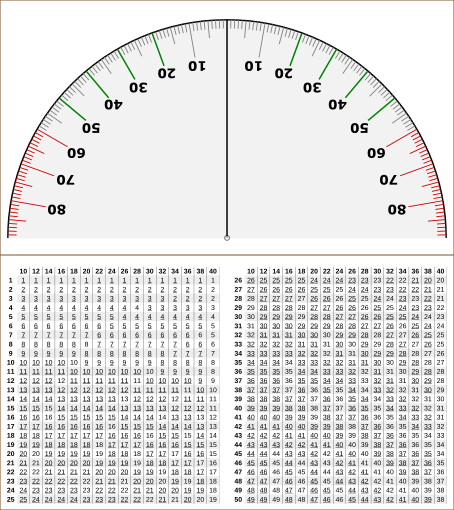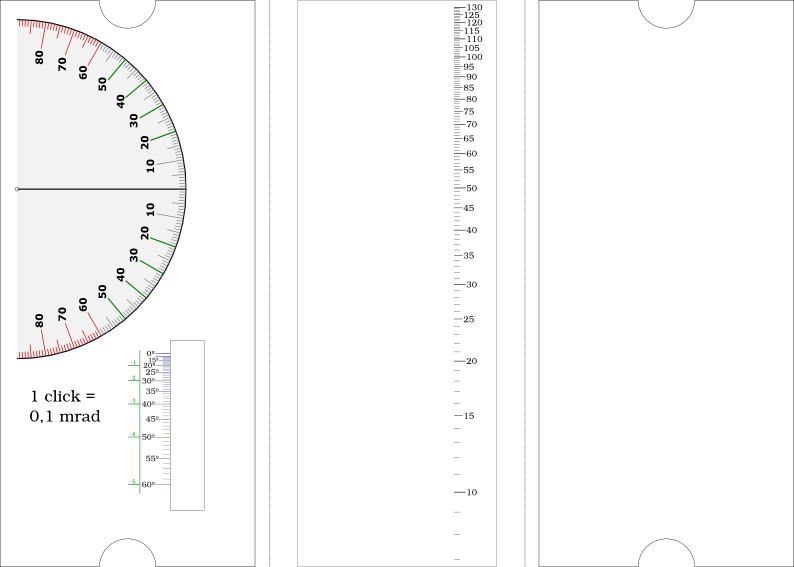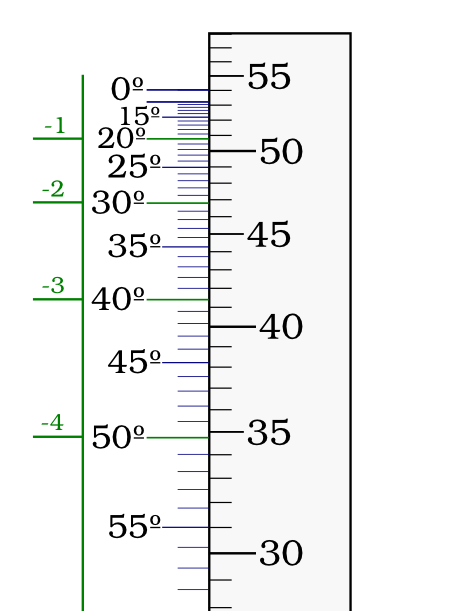Inclined Fire, part #4: 2I2R in practice (prototyping)
Thu, 22/05/2014 - 01:01
Now that we have mastered the arcane science of the world's best heuristic method to estimate slope dope, how would we live with this knowledge in real life? Even the best method is pointless without an action plan.
Let's start with border conditions, where heuristics still make sense. The logic is simple:
1. An electronic calculator is required for any operation beyond addition or subtraction of two-digit numbers;
2. If a calculator is required anyway, we might just as well take a ballistic calculator, and sneer at heuristics, paper tables, etc.
3. Heuristics and paper tables are, therefore, really needed only in a situation when electronics fail. Not because of HEMP (God forbid us being nearby), just due to dead batteries/cracked screen/water damage, etc.
The first approach was dumb and straightforward -- a cosine table for integers:

(Underscore indicates that shown digits of cosine remain the same for the next (odd) value of the angle.)
Fold (9x16 cm), laminate, poke a hole, attach a string, there we go. The max error does not exceed 1 click, which is ok, but:
1. The table takes a lot of space (could only fit up to 40 degrees)
2. An additional mathematical operation (addition) is needed beyond 50 clicks = an excellent opportunity to fail.
1+2=wrong enough.
Then a wise friend of mine has pointed me to a mildot master (which at first I dismissed, for MOA terminology and Rifleman's Rule, both lame). A logarithmic scale is the answer.
Meet the 2I2Ror

PDF to print on A4: 0.1 mrad, ¼ MOA.
Print, cut out the window, laminate, cut into three parts (left to right) face, insert, back. Glue (or staple) face to back via 1 cm wide spacers at the edges so that insert can slide in and out without binding and too much slop. Idea was shamelessly borrowed from here: http://ada.ru/guns/ballistic/mildot/master/manufacturing.htm They also have Ikea-style assembly pictures.
Use the 2I2Ror

Look up bullet path (come-up) in ballistic table as if shooting horizontally, align it with 0º mark in the window. In this example come-up is 54 clicks, which corresponds to 600 m on my rifle. Now 30º mark is next to approximately 47 clicks. Green scale to the left of degrees shows additional correction. For 30º angle it's minus 2 clicks.
47 - 2 = 45
That's it, feuer frei!
(Sanity check: actual correction is 45.2 clicks; the paper plate is definitely dead).
For the nerdy types, correction scale spacing is proportional to log2, angle scale spacing is proportional to log2(1/cos). Two as the base for the logarithm is chosen at random (it was simpler to write vector-generating scripts, with the cos(60º) as a reference); an other base is just scaling (multiply by a constant).
That's all there is for the first prototype. Should work as is, but the quest for Perfection never stops; readers' feedback is highly welcome:
1. Leave as is, or add more features (e.g. drop/wind/atmosphere/lead/whatever table)?
2. Is protractor really needed? (I have three already: ACI, compass, and phone. Do you need one [more]?)
3. Is the range of corrections sufficient? How about resolution?
4. Font ok?
5. Should the device be bigger? Smaller?
English